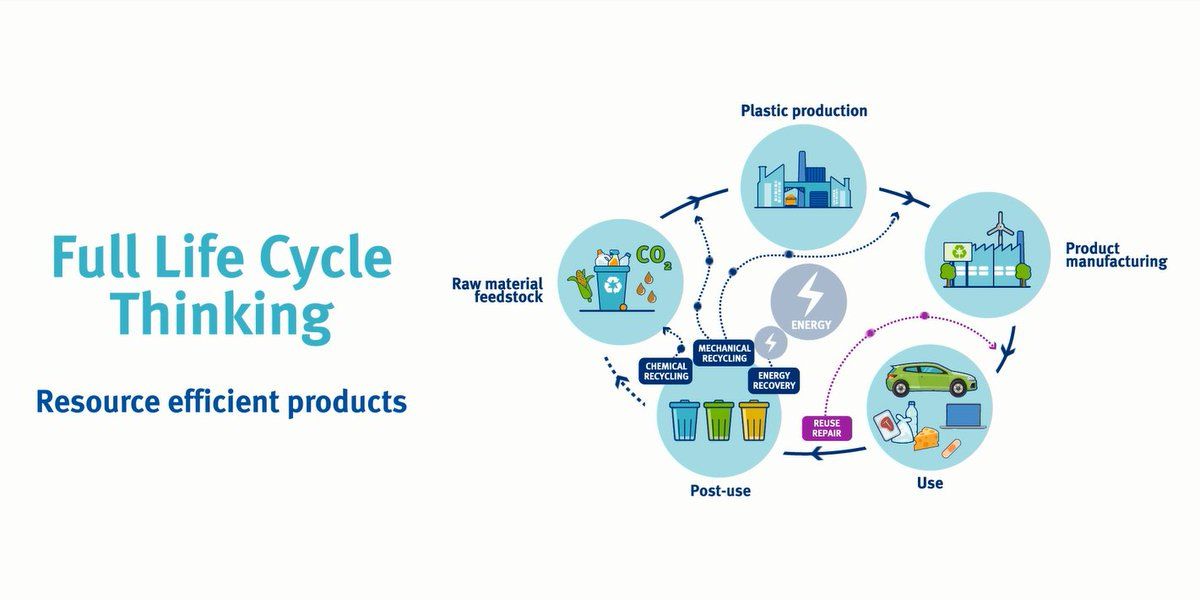How plastics tackle climate change
Plastics material are essential in protecting the environment: From lightweight design in modern cars to insulation materials in the construction sector, plastics materials are saving much more resources than used for its production – thus contributing to sustainability and environmental protection.
The theme for the 2018 World Environment Day is ‘Beat Plastic Pollution’ and the plastics industry has engaged so far in actions and projects aimed at ending this global issue. The focus this year is on numerous actions and measures in 150 countries in order to maintain a liveable nature in the urban environment. Among the project initialized or supported by the plastics industry are “Operation Clean Sweep” and "Plastics 2030 - Voluntary Commitment.” Operation Clean Sweep (OCS) is an international programme designed to prevent the loss of plastic granules (pellets) during handling by the various entities in the plastics industry and their release into the aquatic environment while the Voluntary Commitment focuses on (1) increasing re-use and recycling, (2) preventing plastics leakage into the environment, and (3) accelerating resource efficiency. However, the industry has also admitted that more work is still to be done and has constantly engaged with key stakeholders in order to boost the fight against plastic pollution.

Resource efficient buildings
Around 70% of the energy used in buildings is due to heating and cooling of rooms and the interior. The use of plastics insulation materials save energy, reduces CO2 emissions, enhances quality of life and helps to protect the environment at the same time. Both inside and outside the house, plastics also contributes to impressive architecture, giving birth to outstanding buildings such as the ‘Allianz Arena’ football stadium in Munich, Germany or the National Stadium of Beijing, China, built for the 2008 Summer Olympics.
The typical lifespan of plastic applications in building and construction is 30 to 50 years, with many plastics pipes installed over 50 years ago continuing to function as well as ever today. Plastic pipes deliver fresh and clean drinking water while in the same time are cost-effective to install, operate and maintain. Plastics are also crucial for agriculture as big reservoirs of water are made accessible to farmers in areas where rains are not very frequent.
New mobility
Since the 70s, the use of plastics in airplanes has grown from 4 to around 50% and will continue to grow. The use of plastics in the construction of automobiles gathered pace during the 1950s and it is now hard to imagine a car without plastics. The average modern car weighing 1,500 kg contains between 12-15% of plastic materials. This equates to over 2000 plastic parts of all shapes and sizes; from lights and bumpers, to engine components, dashboards, headrests, switches, clips, panoramic roofs, seats, airbags and seatbelts. Plastics are now the second most commonly used material in automobile manufacture. As the automotive future is electrified, autonomous, shared and connected, modern materials like plastics are even more essential due to its flexibility to make mobility more enjoyable, more efficient and safer.
Efficient and practical in daily shopping
The success of plastics packaging derives from a combination of flexibility (from film to rigid applications), strength, lightness, stability, impermeability and ease of sterilization. All these features make plastics an ideal packaging material for all sorts of goods. While over 50% of all European goods are packaged in plastics, they account only for 17% of the total packaging weight on the market. Furthermore, this weight has been reduced by 28% over the past 10 years! Thus, plastics will continue to be a major part of our daily life helping to reduce food losses and to make a wide range of products available.
Energy of the future
Plastics make a powerful contribution when it comes to renewable energy. Wind turbines' rotor blades and photovoltaic panels contain large amounts of plastics, helping to achieve the efficient production of renewable energy. In these two applications, plastics save 140 times and 340 times the emissions produced during their production respectively.
Too valuable to be thrown away
Plastics don’t only offer energy savings during their use-phase, it also brings sustainable options once they reach end-of-life. The overall recovery of plastic waste in the building and construction sector shows a positive trend improving from 56.2% in 2010 to 57.6% in 2011. Furthermore, simple things like combining thermal insulation with tripled glazed windows can reduce energy consumption by up to 80%. Plastics must be protected as it is valuable resource that cannot be wasted. For this very reason the industry’s stakeholders had continuously supported recycling and re-use. Recycling has increased by 79% in Europe between 2006 and 2016, while Landfill has decreased by 43% in the same period of time.
https://www.plasticseurope.org/en/focus-areas/circular-economy
https://www.plasticseurope.org/en/focus-areas/strategy-plastics








